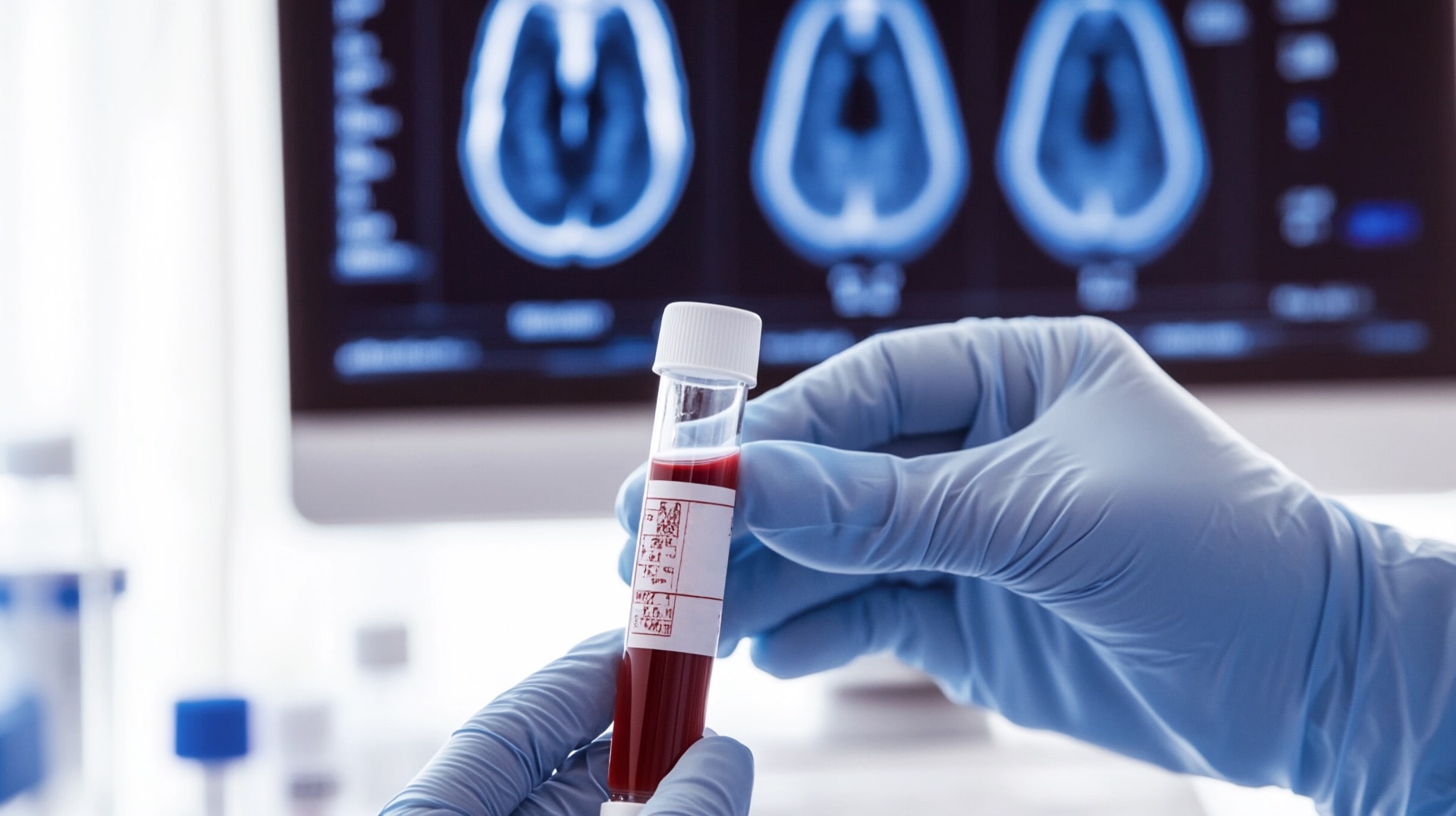You know your chronological age, but what if your body is aging faster or slower than expected? Traditional medical checkups focus on diagnosing existing problems rather than measuring how well you’re aging at the cellular level.
Research shows that people of the same chronological age can have biological ages that differ by 20+ years. Some 50-year-olds have the cellular health of 35-year-olds, while others show aging patterns of 70-year-olds. Without measuring your biological age, you’re missing crucial insights about your health trajectory and longevity prospects—including how your daily habits and lifestyle choices directly influence your biological age and the way you live and age over time.
Modern biological age testing gives you precise, actionable data about how your body is aging. From simple blood tests to advanced epigenetic analysis, you can now calculate biological age with scientific accuracy and use the results to optimize your health and extend your lifespan. Knowing your biological age can motivate you to live healthier by making better lifestyle choices, improving your habits, and focusing on living longer, healthier years.
Having researched longevity science for over a decade and personally tested multiple biological age assessments, I’ve seen how these tools can provide the motivation and direction needed for meaningful health improvements. The key is choosing the right test for your goals and budget.
Key Takeaways
- Multiple proven methods exist to calculate your biological age, from $50 blood tests to $500 epigenetic analyses
- Epigenetic clocks are most accurate with mean errors of 2.8-4.9 years, while blood chemistry tests show 5-7 year accuracy
- Different tests measure different aspects of aging – cellular, functional, metabolic, and organ-specific
- Results should guide action rather than just satisfy curiosity – the best tests provide specific recommendations
- Combination approaches work best for comprehensive assessment across multiple aging pathways
What Are the Best Ways to Calculate Biological Age in 2025?
I evaluated current biological age testing options based on scientific validation, accuracy, accessibility, and actionable insights. Calculating biological age can involve various scientific methods, such as blood tests, specialized calculators, and epigenetic markers, to determine how quickly the body is aging and how lifestyle factors impact this process. The methods below represent the most reliable consumer-available options, ranked from most accessible to most advanced.
Method #1 – Blood Chemistry Analysis
Overview & Specs
Blood chemistry biological age calculators analyze standard lab markers to estimate cellular age. These calculators were developed using large datasets and advanced algorithms to provide accurate age estimates. These tests use 10-41 biomarkers from routine blood panels, making them the most accessible option for most people.
Key specifications:
- Accuracy: 5.5-6.2 years mean absolute error
- Cost: $50-200 (often covered by insurance)
- Turnaround: 1-3 days
- Sample required: Standard blood draw
Key Features
- Uses markers you likely already have from annual physicals
- Multiple validated algorithms available (Aging.AI, Insilico Medicine)
- Tracks inflammatory, metabolic, and organ function markers
- Can monitor changes over time with regular lab work
- Utilizes a biological age calculator to interpret blood chemistry results and provide an estimate of your biological age
Pros & Cons
Pros:
- Most affordable and accessible option
- Uses familiar medical testing procedures
- Can leverage existing lab results
- Biological age is calculated using validated algorithms based on blood test data
- Good starting point for biological age assessment
Cons:
- Less accurate than epigenetic methods
- Results vary significantly between calculators
- May not detect early aging changes
- Limited to blood-based biomarkers only
Best For
People new to biological age testing who want an affordable, accessible starting point using standard medical labs.
Method #2 – Epigenetic DNA Methylation Testing
Overview & Specs
Epigenetic clocks analyze DNA methylation patterns that change predictably with age. These represent the gold standard for biological age measurement. Epigenetic clocks are used to estimate a person’s biological age by analyzing DNA methylation patterns, providing insight into an individual’s true age beyond their chronological years.
Key specifications:
- Accuracy: 2.8-4.9 years mean absolute error
- Cost: $200-500
- Turnaround: 2-4 weeks
- Sample required: Saliva or blood
Key Features
- Multiple clock options (Horvath, Hannum, PhenoAge, GrimAge)
- Measures cellular aging at DNA level
- Uses an age calculator to interpret DNA methylation data and provide a biological age estimate
- Strongest correlation with health outcomes and mortality
- Can detect aging acceleration before clinical symptoms
Pros & Cons
Pros:
- Most scientifically validated approach
- Highest accuracy of available methods
- Measures fundamental aging processes
- Strong predictive power for health outcomes
Cons:
- Higher cost than blood chemistry tests
- Longer processing time
- Limited consumer availability
- Requires specialized laboratory processing
Best For
Serious health optimizers willing to invest in the most accurate biological age measurement currently available.
Method #3 – Functional Fitness Testing
Overview & Specs
Functional biological age assessment measures age-related decline in physical and cognitive performance through standardized tests. Engaging in regular physical activity, such as strength training several times per week, can improve functional fitness and positively impact your biological age.
Key specifications:
- Accuracy: Variable, focuses on functional capacity
- Cost: $0-100 (many tests can be self-administered)
- Turnaround: Immediate results
- Sample required: Physical performance testing
Key Features
- Tests cardiovascular fitness, strength, balance, reaction time
- Can be partially self-administered
- Immediate feedback and results
- Directly measures functional capacity
- Helps you achieve a younger biological age compared to your chronological age by maintaining high levels of functional fitness
Pros & Cons
Pros:
- Free or low-cost options available
- Immediate results and feedback
- Measures practical, daily-life impacts
- Easy to track improvements over time
Cons:
- Less precise than molecular methods
- Influenced by recent activity levels
- May not reflect cellular aging processes
- Requires physical ability to complete tests
Best For
Active individuals who want to measure functional aging and track fitness-related improvements in biological age.
Method #4 – Comprehensive Multi-Biomarker Panels
Overview & Specs
Advanced testing companies offer comprehensive panels combining multiple biological age assessment methods in single packages. These panels are created by integrating various biological age assessment techniques, such as PhenoAge and Aging.AI calculators, which analyze blood test results and epigenetic markers like methylation, into a single package.
Key specifications:
- Accuracy: Varies by included tests (3-6 years typical)
- Cost: $300-800
- Turnaround: 2-3 weeks
- Sample required: Blood, saliva, and sometimes urine
Key Features
- Combines multiple assessment types
- Includes cardiovascular, metabolic, inflammatory markers
- Often includes hormone and nutrient analysis
- Comprehensive reporting with recommendations
Pros & Cons
Pros:
- Most comprehensive single assessment
- Professional interpretation included
- Actionable recommendations provided
- Tracks multiple aging pathways
Cons:
- Higher cost investment
- May include unnecessary tests
- Complexity can be overwhelming
- Quality varies between providers
Best For
Health enthusiasts who want comprehensive assessment and are willing to invest in detailed analysis with professional guidance.
Method #5 – Telomere Length Testing
Overview & Specs
Telomere testing measures the protective DNA caps on chromosomes that shorten with age, though its utility as a biological age marker remains controversial.
Key specifications:
- Accuracy: High variability, not standardized
- Cost: $100-300
- Turnaround: 2-3 weeks
- Sample required: Blood or saliva
Key Features
- Measures cellular aging at chromosome level
- Available from multiple consumer testing companies
- Can track changes over time
- Links to stress and lifestyle factors
Pros & Cons
Pros:
- Measures fundamental aging mechanism
- Available from multiple providers
- Can motivate lifestyle changes
- Research-backed biological relevance
Cons:
- High measurement variability
- Questionable reliability for individual assessment
- Limited predictive power compared to other methods
- Field-wide measurement controversies
Best For
Research-minded individuals interested in cellular aging mechanisms, understanding the limitations of current measurement techniques.
Method #6 – Organ-Specific Age Calculators
Overview & Specs
Specialized calculators focus on specific organ systems like heart age, lung age, kidney age, or brain age using relevant biomarkers and risk factors.
Key specifications:
- Accuracy: 3-10 years depending on organ system
- Cost: $0-150 (many free online tools available)
- Turnaround: Immediate for online tools
- Sample required: Varies by organ system
Key Features
- Targets specific health concerns
- Often free online tools available
- Uses organ-specific risk factors
- Can motivate targeted interventions
Pros & Cons
Pros:
- Free options widely available
- Focuses on specific health concerns
- Easy to understand and interpret
- Can motivate targeted lifestyle changes
Cons:
- Limited scope compared to comprehensive tests
- Highly variable accuracy between tools
- May not reflect overall biological age
- Often lack scientific validation
Best For
People with specific health concerns (heart disease, lung health) who want targeted assessment and motivation for organ-specific improvements.
Method #7 – AI-Powered Comprehensive Analysis
Overview & Specs
Emerging companies and research groups use artificial intelligence (AI) models to analyze multiple data types (photos, voice, movement, biomarkers) for comprehensive biological age assessment. For example, researchers from Harvard University and Massachusetts General Hospital developed an AI model called FaceAge that utilized face photographs to estimate biological age and predict survival of oncology patients.
Key specifications:
- Accuracy: 3-7 years (varies by data inputs)
- Cost: $200-600
- Turnaround: 1-2 weeks
- Sample required: Multiple data types
Key Features
- Combines traditional biomarkers with novel data sources
- Uses machine learning for pattern recognition
- Can include wearable device data integration
- Continuous monitoring capabilities
Pros & Cons
Pros:
- Incorporates multiple aging indicators
- Uses cutting-edge analytical techniques
- Can integrate with existing health data
- Potential for continuous monitoring
Cons:
- Limited validation data available
- Higher cost for experimental technology
- Privacy concerns with comprehensive data collection
- Accuracy claims may be overstated
Best For
Early adopters interested in cutting-edge technology who understand the limitations of newer, less-validated approaches.
What Is Biological Age Testing?
Biological age testing measures how well your body is functioning compared to other people your chronological age. Unlike simply counting years since birth, these assessments analyze cellular, molecular, and functional markers that change predictably as we age. Biological age testing provides insights into the aging process by measuring changes at the cellular and molecular level.
Key concepts:
- Chronological age: Time elapsed since birth
- Biological age: Physiological condition relative to age-matched peers
- Aging biomarkers: Measurable indicators that change with biological aging
- Age acceleration: When biological age exceeds chronological age
Think of biological age testing like a comprehensive diagnostic for your car. The odometer (chronological age) tells you one thing, but a thorough inspection of engine performance, wear patterns, and system function (biological age) tells you about actual condition and expected remaining service life.
How to Choose the Right Biological Age Test
Key Features to Look For
Scientific validation matters most:
- Look for tests based on studies with 1,000+ participants
- Seek peer-reviewed research supporting the methodology
- Check if results correlate with health outcomes, not just age
- Verify the test has been replicated across different populations
Accuracy considerations:
- Epigenetic clocks: Most accurate (2.8-4.9 years error)
- Blood chemistry panels: Moderate accuracy (5-7 years error)
- Functional tests: Variable accuracy, measures different aspects
- Combination approaches: Potentially most comprehensive
Actionable insights:
- Tests should provide specific recommendations, not just numbers
- Look for lifestyle modification suggestions
- Seek tests that can track changes over time
- Prefer tests that explain what drives your results
Common Mistakes to Avoid
Don’t rely on single biomarker tests: Telomere length alone, for example, has high measurement variability and limited predictive power for individuals.
Avoid unvalidated online calculators: Many free online tools lack scientific backing and can give wildly different results for the same person. Using inaccurate tests can lead to an increased risk of making poor health decisions.
Don’t expect perfect accuracy: Even the best tests have 3-5 year margins of error. Focus on trends and relative changes rather than exact numbers.
Don’t ignore the limitations: Most tests work best for adults 25-80 years old. Results may be less reliable at age extremes.
Best Options by Budget and Use Case
Budget-conscious ($0-100):
- Free functional fitness assessments
- Blood chemistry analysis using existing lab work
- Organ-specific online calculators for targeted concerns
Moderate investment ($100-300):
- Consumer epigenetic testing kits
- Comprehensive blood chemistry panels
- Professional functional assessments
Premium testing ($300+):
- Advanced epigenetic clocks (GrimAge, PhenoAge)
- Multi-biomarker comprehensive panels
- Professional longevity clinic assessments
Why Biological Age Testing Matters
Early Detection and Prevention
Biological age acceleration often appears years before clinical symptoms develop. Research shows:
- Cardiovascular disease: Biological age acceleration precedes heart disease by 5-10 years
- Cognitive decline: Brain aging markers appear before memory problems
- Metabolic dysfunction: Cellular aging predicts diabetes risk before glucose problems
- Cancer susceptibility: Immune system aging affects cancer surveillance
Personalized Health Optimization
Rather than following generic health advice, biological age data enables targeted interventions:
Precision lifestyle medicine:
- Specific dietary recommendations based on metabolic age
- Exercise prescriptions tailored to cardiovascular and musculoskeletal age
- Stress management strategies based on cellular stress markers
- Supplement protocols addressing individual deficiencies
Biological age data can help you create personalized health strategies for optimal aging, ensuring your approach is tailored to your unique needs.
Tracking intervention effectiveness: Studies show people who monitor biological age are more likely to maintain healthy behaviors and achieve better outcomes than those following generic recommendations.
Motivation for Lasting Change
Research demonstrates that learning your biological age motivates behavior change more effectively than generic health warnings:
- Smoking cessation: Lung age calculators increase quit rates by 13%
- Exercise adoption: Heart age assessments double exercise initiation rates
- Dietary improvements: Metabolic age feedback improves diet quality in 70% of users
- Medical compliance: Biological age awareness increases preventive care utilization
There are many things you can do to improve your biological age, including managing how often you feel stressed.
Summary and Recommendations
The best biological age tests combine scientific validation, practical accessibility, and actionable insights. For most people, I recommend starting with blood chemistry analysis using existing lab work, then progressing to epigenetic testing if you want higher accuracy.
Top recommendations by category:
- Most accurate: Epigenetic DNA methylation testing (GrimAge, PhenoAge)
- Best value: Blood chemistry analysis using standard lab panels
- Most comprehensive: Multi-biomarker panels from established companies
- Most accessible: Functional fitness assessments and free online tools
- Dietary support: Regularly consume a variety of vegetables and fermented foods, and be mindful of what you eat to support healthy aging.
Next steps:
- Assess your goals: Determine if you want general screening or specific health focus
- Consider your budget: Balance cost with desired accuracy and comprehensiveness
- Choose reputable providers: Verify scientific backing and professional oversight
- Plan for follow-up: Budget for retesting to track progress over time
- Prepare for action: Be ready to implement recommendations based on your results
Remember: The goal isn’t just to calculate biological age, but to use that information to optimize your health and extend your healthspan.
Frequently Asked Questions
What’s the most accurate way to calculate biological age?
Epigenetic DNA methylation clocks, particularly GrimAge and PhenoAge, currently offer the highest accuracy with mean errors of 2.8-4.9 years. These tests analyze DNA methylation patterns that change predictably with age and strongly correlate with health outcomes and mortality risk.
Are expensive biological age tests worth the investment?
For most people, mid-range testing ($200-400) provides the best balance of accuracy and value. Very expensive tests ($800+) may include unnecessary components, while very cheap tests often lack validation. Consider your health optimization goals and start with proven, moderately-priced options.
How often should I test my biological age?
Most experts recommend testing every 6-12 months since biological changes occur gradually. If you’re actively implementing anti-aging interventions, quarterly testing can help track progress. Avoid testing more frequently than monthly, as short-term fluctuations aren’t meaningful.
Can I calculate biological age at home?
Some aspects can be self-assessed, including functional fitness tests and basic health measurements. However, the most accurate methods require laboratory analysis of blood or saliva samples. Many companies offer at-home sample collection with professional laboratory processing.
What should I do if my biological age is higher than my chronological age?
If your biological age is higher than your actual age, it may indicate accelerated aging and the need for lifestyle changes. Don’t panic – biological age is modifiable through lifestyle interventions. Focus on evidence-based strategies: regular exercise, quality sleep, stress management, anti-inflammatory nutrition, and social connections. Consider working with healthcare providers familiar with longevity medicine for personalized optimization plans.
References
- Bafei, Solim Essomandan Clémence, and Chong Shen. “Biomarkers selection and mathematical modeling in biological age estimation.” npj Aging 9.1 (2023): 13.
- Bonner, Carissa, et al. “Biological age calculators to motivate lifestyle change: Environmental scan of online tools and evaluation of behaviour change techniques.” Health Promotion Journal of Australia 34.1 (2023): 202-210.
- Erema, Veronika V., et al. “Biological age predictors: The status quo and future trends.” International Journal of Molecular Sciences 23.23 (2022): 15103.







